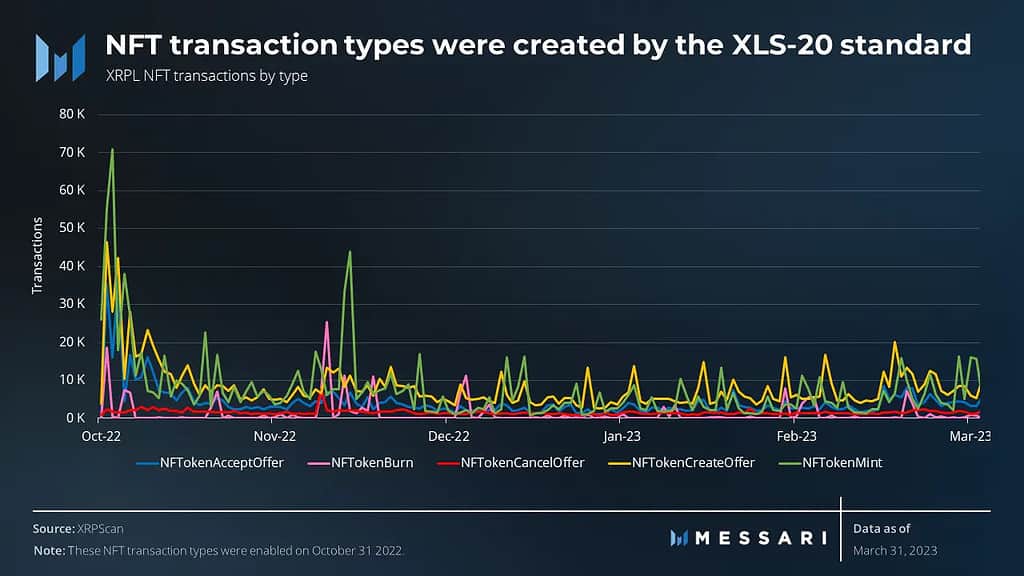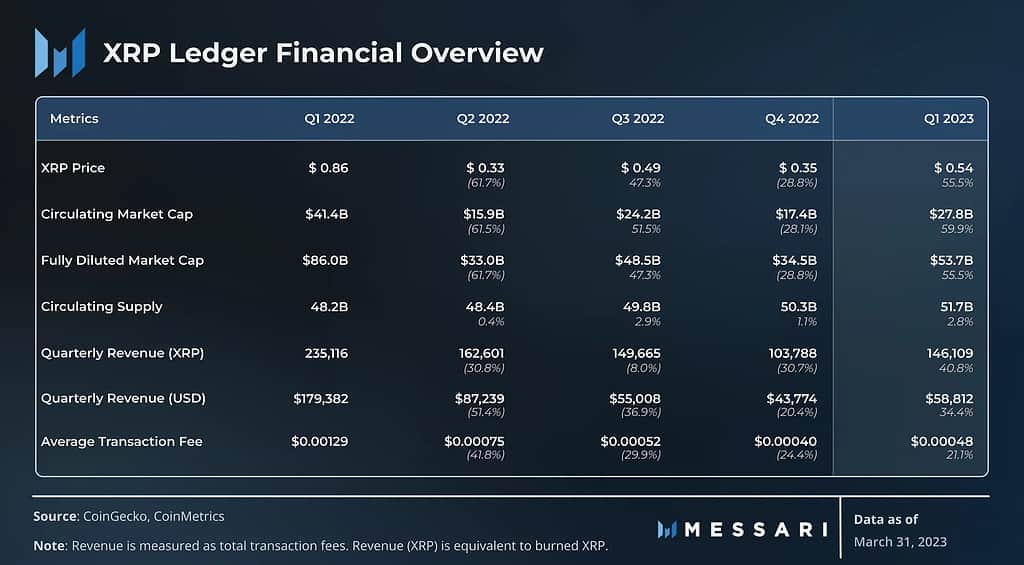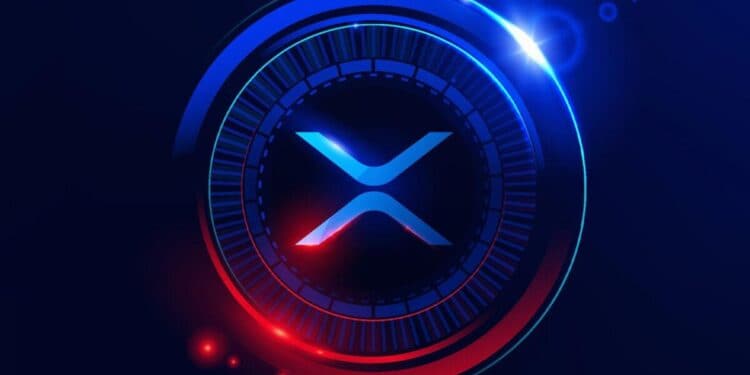In a recent report published by Messari, the state of the XRP Ledger (XRPL) in the first quarter of 2023 was analyzed, revealing some key insights into the network’s performance and developments.
The report highlights a significant increase in activity on the XRP Ledger, with daily active addresses and daily transactions rising by 13.9% and 10.7% quarter-over-quarter (QoQ), respectively.

One of the standout findings of the report was XRP’s price surge, experiencing a 56% QoQ increase from $0.35 to $0.54. Interestingly, XRP outpaced the total crypto market cap in Q1, largely due to positive news emerging from the ongoing legal case between Ripple and the U.S. SEC.
XRPL: Key Metrics & Performance Analysis
The report also shed light on the XRP Ledger’s NFT transactions. Although NFT activity experienced a decline in QoQ, there were still notable figures, with 436,000 NFT mints and 277,000 NFT offers accepted.
The XLS-20 Standard, which maps NFT transactions, introduced five new transaction types, and an additional five types are currently under the proposal.

Two significant developments on the XRP Ledger during Q1 were the launch of the Coreum and Flare Network sidechains. These sidechains mark a significant expansion of the XRPL ecosystem, with future projects like Futureverse’s Root Network and Hooks expected to enhance its capabilities further.
The report provides an informative primer on the XRP Ledger, highlighting its decade-long operation and its offering of fast, energy-efficient, cross-currency, and cross-border payments.
The XRPL supports native Issued Currencies, a decentralized exchange (DEX), escrow functionality, and token management. While it does not support smart contracts at the base layer, the XRPL’s native capabilities enable it to perform similar functions as other networks.
Financially, XRP ranks as the sixth largest cryptocurrency by market capitalization, amounting to approximately $28 billion in Q1 2023. The XRPL averages around 15 transactions per second, with the potential capacity to support up to 1,500.

Transaction fees on the network are deterministic and cost 10 drops per transaction, with a drop being a millionth of an XRP, valued at a fraction of a cent.
The XRP Ledger’s ecosystem has attracted support from various entities, including Ripple, XRPL Foundation, XRPL Labs, and XRPL Commons, among others.
The network aims to provide a digital payment infrastructure for both individuals and existing financial entities like central banks, going beyond the narrow focus of peer-to-peer transactions.
Nevertheless, the report highlights the XRP Ledger’s growth and increased activity in Q1 2023. With the introduction of sidechains, ongoing developments, and the anticipation of new token standards, the XRPL ecosystem is poised for further expansion and acceleration in the coming months.
Related Reading | Bitcoin Whale’s Massive Deposit On Binance Raises Eyebrows In Crypto Community

